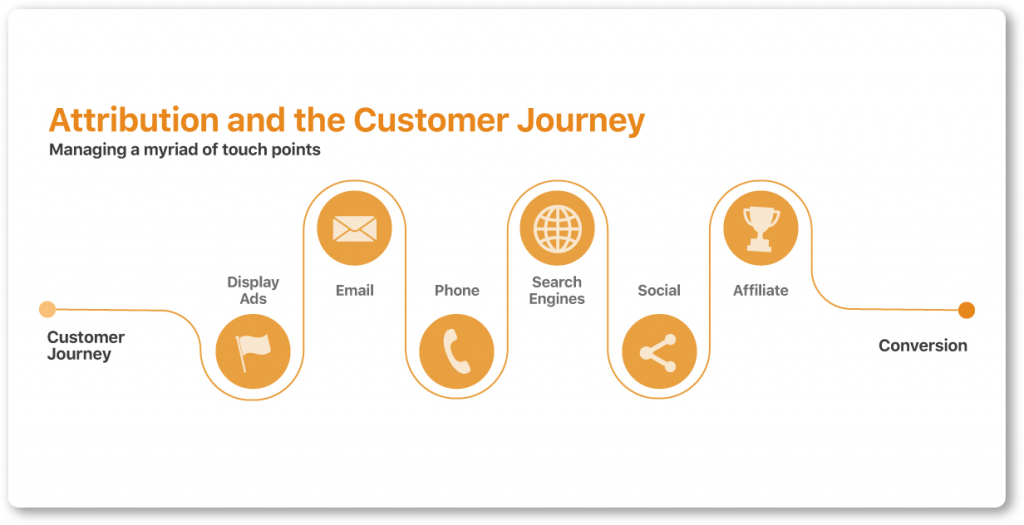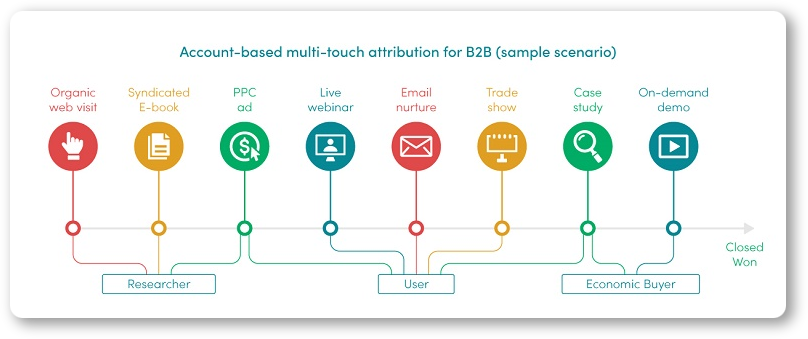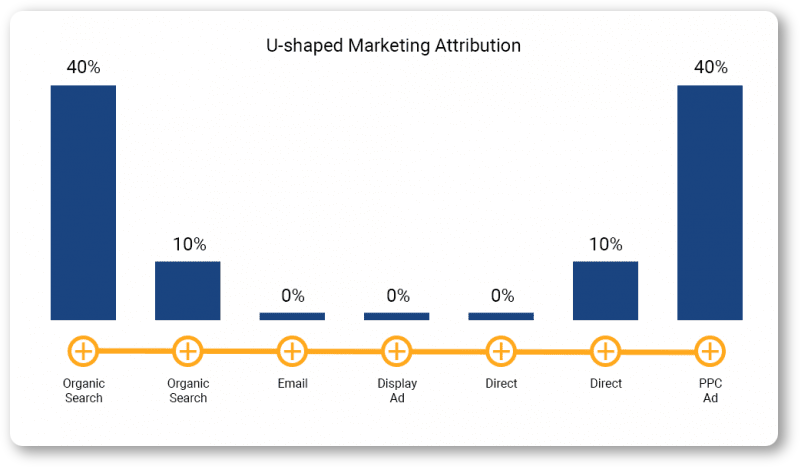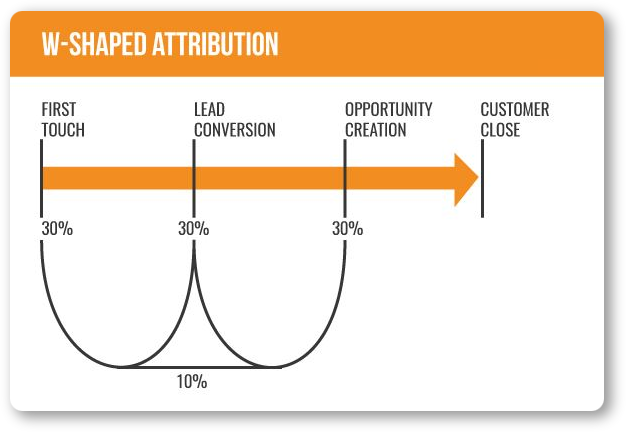Marketing attribution
Measuring the return on investment (ROI) from different marketing activities is tricky. Some outcomes can be assessed instantly, like the number of app downloads after a PPC campaign. Meanwhile, other results may not be that apparent in terms of lead generation and conversions.
This is where marketing attribution comes to the rescue!
What is marketing attribution?
Marketing attribution is a process of identifying sets of customer actions that ultimately led them towards making a purchase. These actions, aka touchpoints, can be everything that prospects do on their way to the deal — from typing a query in the Google search bar to contacting the sales team via a phone call.
The process is similar to mapping out customer journeys because, in both cases, a company summarizes the steps a client goes through when interacting with the brand.
The difference lies in the ultimate goal. While the customer journey map focuses on decision-making stages, from awareness to conversion, marketing attribution shows what marketing tactics and channels are the most successful at each step.
The two terms are interrelated, that’s why marketing attribution is sometimes called lead attribution, as well.

Why do you need marketing attribution?
“Half the money I spend on advertising is wasted; the trouble is I don’t know which half.”
John Wanamaker
Digital marketing results, especially in the case of inbound activities, can be ambiguous. You never know what actions are essential, and which ones can be skipped.
Here’s an example. A company updates the contact form on its website and sees an increased number of leads shortly after. Should it attribute increased traffic to design changes? Or is it an accumulated effect from SEO actions? Or, perhaps, a result of good content published?
Without understanding the causal link between observed outcomes and specific marketing efforts, the company won’t be able to calculate marketing ROI. Consequently, it won’t know how to scale up or compare the efficiency of different marketing channels it uses.
Marketing attribution helps avoid these struggles. It allows to:
- Identify which communication channels and actions make a difference.
- Measure conversion rates across different channels by calculating how many impressions turn into clicks and how many clicks turn into purchases.
- Identify what content engages leads and to what extent, for example, by comparing outcomes from the same touchpoints or A/B testing messages and ad creatives.
- Plan activities as interrelated marketing actions rather than scattered ad campaigns.

The needed information can be collected and analyzed using 2 techniques:
Interactive attribution (marketing channels)
This type is used mainly in the B2C market. The company’s goal is to understand what digital channels perform better than others.
Account-based attribution (key accounts)
In this case, a company considers not only channels but also people targeted via these channels, for example, the ones who make purchase decisions and the ones who already use products or services. The account-based model is popular in the B2B market.

Regardless of an attribution type, its objective is to help marketers make data-driven decisions during future ad campaigns. To get more insights, in addition to ROI comparison, they may analyze return on ad spend (ROAS) and cost per lead (CPL) metrics, as well.
Marketing attribution models
Seems easy, right? There is, however, a catch. The process supposes that no marketing channel can be treated isolated because all are links in one chain. Without one touchpoint (e.g., without a website), the other (e.g., a lead generation form) may not work. So, the question is, how to determine the contribution of every single channel within the lead’s decision ladder?
Here’s the answer: just choose a marketing attribution model and stick to it. Below we’ve listed the 3 most common ones.
Single source attribution
Based on this model, all credits should be attributed to a single marketing channel or event. For example, if a user clicks on a Google Ads link, proceeds to the website, and purchases something, the event will be attributed to a PPC campaign, even though this user may have previously visited this same website from search results or social media.
This exact case is a last touch attribution model when the outcome is assigned to the latest action that preceded the purchase. However, you can also use a first touch attribution model, when credits are given to the very first click or visit that happened in a conversion path.
Multi-source attribution
Here, every touchpoint is taken into consideration. You can treat them equally so that if your company launches 2 marketing campaigns, each will be given an equal conversion credit of 50%. This is the simplest, linear multi-source attribution scheme.
However, there are also more complex models, such as:
- U-shaped attribution. Based on this model, marketers give the most weight to the first and last customer touchpoints before conversion (40%+40%). The remaining credit (20%) is distributed among interim events.

- W-shaped attribution. In addition to the first and last touchpoints, marketers also consider the opportunity creation event. All three touchpoints are given a 30% credit, while the remaining 10% is assigned to interim actions.

- Full path. Here, 90% of the credit is evenly split between 4 touchpoints: first touch, conversion, opportunity creation, and customer close. The remaining 10% are credited to interim events.
Algorithmic (data-driven) attribution
This model is based on statistics and machine learning. It involves using algorithms that collect and process data from various marketing channels and provide insights to precisely calculate every channel’s significance with a given probability. As a result, a marketer can see how exactly the touchpoint has contributed to the outcome.
Algorithmic attribution can be implemented using Google Analytics (in particular, its traffic source dimensions), Google Display & Video 360, Ruler Analytics, Adobe Analytics, and other tools.
Wrapping up
Marketing attribution starts with understanding points of contact with customers and putting them in a sequence.
Depending on how many marketing channels a company uses and what the purpose of the analysis is, it can choose one of the 3 common attribution models. Single- and multi-source models will give you rough insights about every channel’s credits, while the algorithmic model will show a truer big picture.















